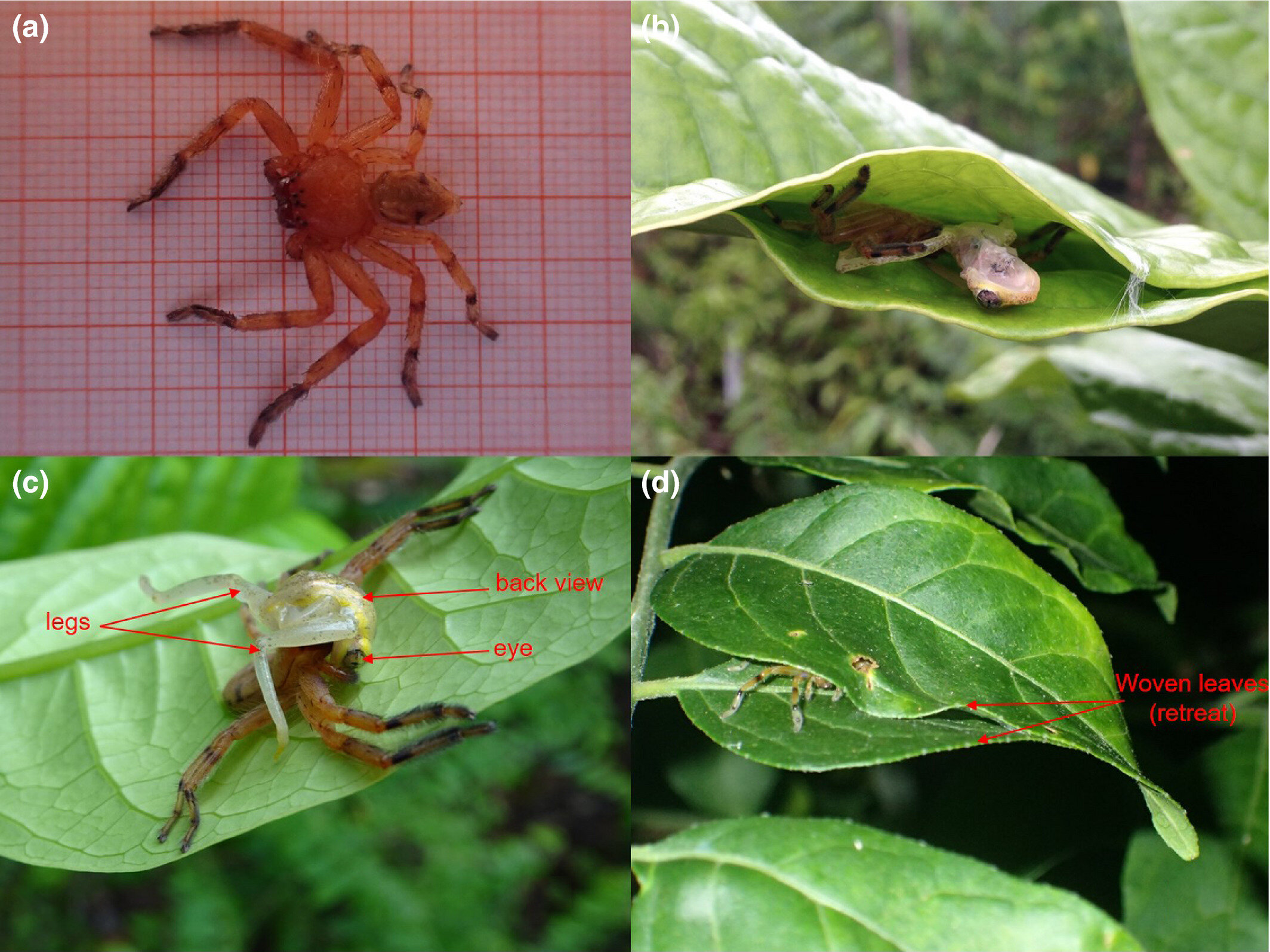#Evidence of huntsman spider creating leaf trap for a frog found in Madagascar

“#Evidence of huntsman spider creating leaf trap for a frog found in Madagascar”

A team of researchers from the Centre of the SAVA Region and the University of Antananarivo, both in Madagascar, and one from the University of Goettingen in Germany, has found evidence of a huntsman spider living in a northeastern part of Madagascar creating a trap for tree frogs. In their paper published in the journal Ecology and Evolution, the group describes their observation of a huntsman spider pulling a dead frog into what appeared to be a custom-made leaf trap.
Huntsman spiders are named for their hunting behavior, by contrast with spiders that spin webs to catch their food. Huntsman spiders kill their prey by biting and injecting victims with venom. In this new effort, the researchers have found a type of huntsman spider that appears to create traps for amphibians, making them easier to catch.
The researchers were carrying out a survey of creatures living in a certain part of Madagascar when they came upon a huntsman spider in a tree eating a treefrog. Interestingly, just next to the spider was an unusual leaf structure—it was made of two leaves that had been sewn together at the back and on ends with spider silk, making a pocket of sorts. As the researchers approached the spider, it pulled the dead frog into the pouch, attempting to hide. Intrigued by their finding, the researchers came to believe that the spider had created the leaf structure as a way to trap amphibians such as tree frogs.
As the researchers continued their survey the following year, they found three leaf structures of the same type, though the spiders that had created them were not on the scene. Still, the discovery of other such structures suggested that they were relatively common. And logic suggested that the frogs were not creating them as a shelter as there were many other easily accessible types of natural shelters for them to use. They noted that tree frogs are known to seek out shelter during the hot parts of the day, and the kind made by the spiders appeared to be ideal. They acknowledge that more research is required to confirm their suspicions, but suggest the idea of the spiders creating traps for amphibians is not far-fetched—spiders of many species create many kinds of traps.
New spider species named after Greta
Thio Rosin Fulgence et al. Spider traps amphibian in northeastern Madagascar, Ecology and Evolution (2020). DOI: 10.1002/ece3.7102
© 2021 Science X Network
Citation:
Evidence of huntsman spider creating leaf trap for a frog found in Madagascar (2021, January 11)
retrieved 11 January 2021
from https://phys.org/news/2021-01-evidence-huntsman-spider-leaf-frog.html
This document is subject to copyright. Apart from any fair dealing for the purpose of private study or research, no
part may be reproduced without the written permission. The content is provided for information purposes only.
If you liked the article, do not forget to share it with your friends. Follow us on Google News too, click on the star and choose us from your favorites.
For forums sites go to Forum.BuradaBiliyorum.Com
If you want to read more Like this articles, you can visit our Science category.



